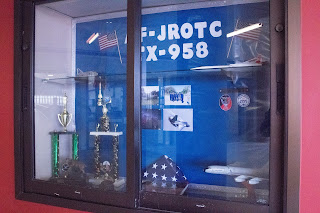Thursday, January 25, 2018
Thursday, January 18, 2018
Tuesday, January 9, 2018
File Formats
RAW Files
Pros:
- Allow a lot of customization
- Can be turned into JPEGs
- Can be easily processed by photo editing programs
Cons:
- Have large file size
JPEG Files
Pros:
- Have overall higher quality
- Are usually automatically processed
- Have a small file size
Cons:
- Allow less freedom and customization; harder to edit
Pros:
- Allow a lot of customization
- Can be turned into JPEGs
- Can be easily processed by photo editing programs
Cons:
- Have large file size
JPEG Files
Pros:
- Have overall higher quality
- Are usually automatically processed
- Have a small file size
Cons:
- Allow less freedom and customization; harder to edit
1. Under the first heading "Capturing the Images," how much of the data does a RAW file retain after it is captured by the camera? All of the data is captured.
2. Under the second heading "Processing the Files," what are some of the things that a RAW file enables a photographer to edit after the image is taken? White balance, contrast, highlights, shadows, colors, saturation, and more can all be edited.
3. Under the third heading "Practicalities," what are some of the factors that photographers must consider when deciding to shoot in RAW? A photographer must know that RAW files take up a lot of memory, know that not all cameras can shoot in RAW, and know that a JPEG cannot be converted into a RAW.
4. Under the fourth heading "Which one is for you?" why would an aspiring professional photographer need to know how to work with RAW files? More amateur photos look far better with editing, and RAW files allow a lot of editing.
1. Which file formats discussed have you used in the past? I am most experienced with JPEG and PNG files.
2. What is the difference between a Raster and a Vector file? Raster files are made out of pixels and can be displayed, and Vector files are uncompressed and allow editing.
1. Is this format lossy or lossless?
.jpeg - Lossy
.tiff - Lossless
.psd - Lossless
.dng - Lossy
.nef - Lossless
2. What are common uses for each? By this I mean where would I publish each of them for the highest quality.
.jpeg - Multipurpose
.tiff - Editing
.psd - Photoshop
.dng - Editing
.nef - Editing
3. Can you create this type of file in your camera?
.jpeg - Yes
.tiff - Yes
.psd - Yes
.dng - Yes
.nef - Yes
Subscribe to:
Comments (Atom)












